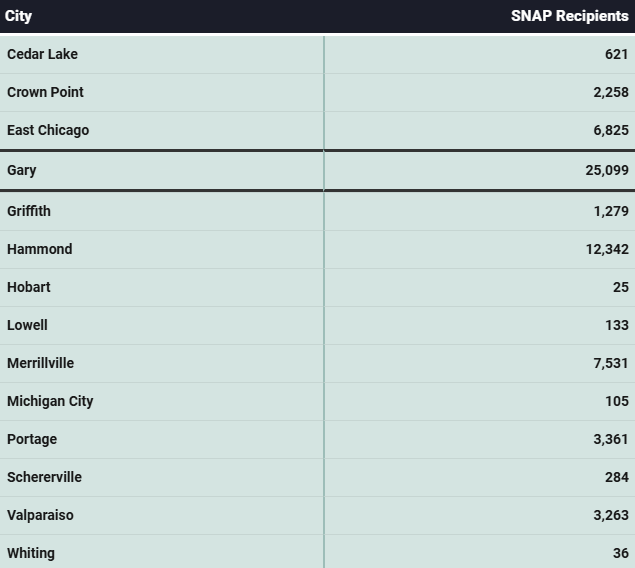By Rayonna Burton-Jernigan and Javonte Anderson
With federal food aid in flux, organizations and residents across Gary and Northwest Indiana are stepping up to make sure their neighbors don’t go hungry.
Among them is the Food Bank of Northwest Indiana, where volunteers and staff are preparing for what could be one of their busiest months in years. Victor Garcia, the organization’s president and CEO, said they have already seen an uptick in need as families brace for potential reductions in their Supplemental Nutrition Assistance Program (SNAP) benefits — money many depend on to buy food.
“We’ve seen an increased demand over the last week or so as people have been preparing for this challenge with November SNAP benefits,” Garcia said. “Yes, we’ve been tracking and planning for it.”
The unease rippling through his warehouse reflects a growing national uncertainty over food aid. Earlier this week, the Trump administration told a federal judge that Americans will receive only partial payments from SNAP this month. Officials said the government will not draw additional money to fund full benefits during the ongoing federal shutdown, and it remains unclear when even those reduced payments will be distributed.
The stakes are especially high in Gary, where nearly 38% of residents — nearly 2 in 5 — rely on SNAP, according to data from the Indiana Family and Social Services Administration. In a city where grocery options are already limited, even a partial delay could mean an empty pantry for thousands.
Garcia said he recently spoke with Gary Mayor Eddie Melton and that they are working to expand food distributions in the city.
But the need for SNAP extends far beyond Gary and across Northwest Indiana.
A Capital B analysis of state data shows the widespread reliance across the region, where thousands of residents in multiple communities depend on SNAP benefits.
Northwest Indiana SNAP Recipients
How many people in each Northwest Indiana city receive food assistance through the SNAP program

Table: Javonte Anderson/Capital B Source: Indiana Family & Social Services Administration
Garcia said the food bank is preparing to fill the gap. On Monday, alongside U.S. Rep. Frank Mrvan, the organization announced the Northwest Indiana Emergency Response Fund, backed by a $100,000 grant from the John Anderson Foundation, to help source and distribute more food if federal aid stalls.
“We’ve been in conversation with multiple city officials and foundation partners to identify ways that we can continue to get people access to the food they need to survive,” Garcia said. He encouraged residents to check the food bank’s website for mobile-market schedules and volunteer opportunities.
Mrvan, who represents Northwest Indiana in Congress and attended the announcement at the food bank, said the federal government already has the resources to keep families fed.
“It’s very cruel and intentional when you have the opportunity and the funds there for emergency situations to be able to provide for families who need food,” he said. “My job as a member of Congress is [to] … open up government, fund SNAP and make ourselves efficient,” he said.
Gary residents who help feed their neighbors say the crisis has only magnified problems that already existed.
“This whole SNAP benefits thing just started, but we’ve been in a crisis because food costs so much,” said Alma Wilkes of the Gary Food Council. “It’s heartbreaking. There’s definitely a problem, and more needs to be done.”
Gary food organizer LaJuan Clemons, who also runs a small food-delivery program for families in need, said his team has begun setting aside extra boxes in case demand spikes. The boxes, he said, are usually donated to FEMA and last about 12 days, offering food for families in need.
Clemons said he wants to see stronger coordination among city officials, residents, nonprofits, and grocery partners before conditions worsen.
“We have to create something for ourselves, and we have to do that now, because it’s not going to get any better,” he said.
